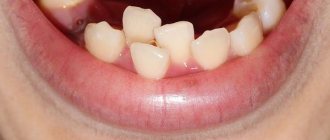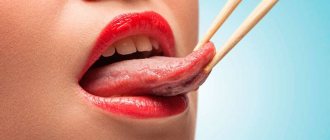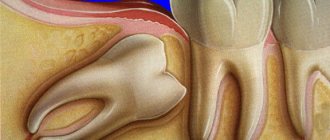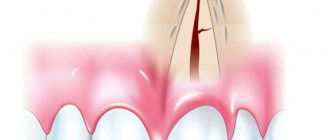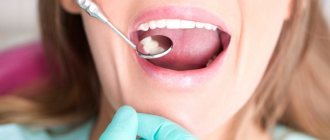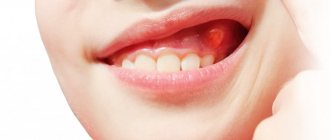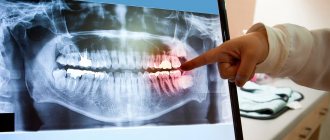26.11.2019
Many patients have itchy gums after tooth extraction. This is a dental problem, which is a fairly common consequence of surgery. The phenomenon occurs quite often in both adults and children. The operation can lead to other consequences, which will also be described in this article.
Correct oral care after tooth extraction
When dental problems arise, the dentist treating a person may recommend removing one or more affected teeth that cannot be restored. This operation is considered a minor surgical procedure. It is important to know not only how to properly prepare for it, but also what to do immediately after the operation. Of course, you can get more detailed recommendations from your doctor, but there are certain tips that will help the damaged gum heal faster and prevent gum scratching after tooth extraction.
About dental anesthesia
Standard dental practice is an injection of anesthetic; Taking tablet analgesics before going to the dentist is not recommended, as it leads to a decrease in the effectiveness of anesthesia (usually the effect of an anesthetic injection is 45 minutes). For patients suffering from a fear of injections, it is possible to use paste anesthesia, which has a similar effect.
The choice of anesthesia is up to the dentist; Taking into account the individual pain sensitivity threshold of each patient, the standard dose is sometimes doubled or even tripled. With proper selection of an anesthetic, discomfort during the procedure for the patient is excluded.
Taking painkillers
If the doctor left a cotton-gauze swab in the tooth socket, then check exactly when it can be removed from the oral cavity. Thanks to this tampon, the wound heals faster. To get a positive result, you should not pull it out earlier than the dentist advises.
When the anesthetic drugs stop working, quite severe pain and discomfort may occur in the injured area of the oral cavity. Most dentists allow you to take painkillers, but you should check in advance which remedy will be most effective in your situation.
It must be remembered that even a simple tooth extraction is quite a lot of stress for the human body. That is why experts advise forgetting about strong physical activity at least for a few days. It’s better to rest a little these couple of days so that the body has time to recover from a stressful situation.
If the doctor does not give other advice, then you will be able to perform your usual regular oral hygiene within 24 hours after the operation. Remember that you need to brush your teeth carefully, especially in the place where the damaged hole is located and near it. Especially if your gums itch after tooth extraction. It is advisable to add socket rinsing to regular teeth cleaning and additionally use antiseptic agents. Rinsing and brushing teeth are allowed one day after surgery.
Proper oral care, especially after surgery, is very important. Bacteria or infections can enter an open wound, so it’s worth making sure they don’t have a chance.
If you notice that the gums are very swollen, suppuration has begun, or the wound is dry, the itching is too strong, then you should immediately seek advice from a specialist. The same should be done if severe pain occurs that does not go away after a long time after the operation.
Treatment of alveolitis
When the socket becomes inflamed, the main thing is to eliminate the source of infection, prevent the development of inflammation and preserve the dentition. In order to alleviate the patient’s condition, the dentist uses the following therapy methods:
- Mechanical cleansing of the hole, washing out purulent residues with a solution of nitrofural or hydrogen peroxide.
- Anesthesia of the hole. The pain syndrome is relieved with the help of local applications with anesthetics and analgesics. To do this, the doctor applies the lotion for half an hour and then removes it to prevent the proliferation of microbes in the area. The dentist will advise the patient to repeat the procedure several times a day. Taking painkillers orally is not recommended.
- Taking antibiotics. In the presence of concomitant diseases, alveolitis is treated with antibiotics.
With the right approach, the signs of alveolitis subside 2-3 days after the start of treatment. If therapy was not started on time, residual pain may drag on for 2–3 weeks.
With the permission of the dentist, additional treatment of alveolitis with folk remedies is possible:
- Sage rinses. To prepare the solution, brew a large spoonful of dry sage in 250 ml of boiling water, leave the mixture for an hour, wrapping the container in a towel. After this, the liquid should be filtered and used for rinsing.
- Gargling with chamomile flowers. To prepare the composition, brew a large spoonful of chamomile flowers in a glass of water for 15 minutes, insulating the container with a towel. The infusion should be strained and rinsed your mouth up to 12 times a day.
- Poplar buds. To prepare, take half a glass of buds, pour into a glass container and pour in 500 ml of vodka. The product should be infused for 10 days in the dark and cool, then filtered, soaked in cotton swabs and applied to the inflamed area.
- A soda rinse solution can also be an effective addition in the treatment of alveolitis. You should take a large spoonful of powder in a glass of warm water or mix soda with water to obtain a paste-like mass, which then needs to be used to treat the hole.
- Burdock leaves. To prepare a medicinal decoction of burdock leaves, you need to pour 20 grams of raw material with 2 glasses of water, and then simmer the mixture over low heat for about 40 minutes. The resulting solution should be cooled and filtered, and then used for rinsing.
- Aspen bark. Pour 1 tablespoon of crushed aspen bark into one glass of boiling water. It is important to leave the solution in an airtight container for 3 hours, and then use 100 ml of strained warm liquid at least 3 times a day.
- Anise infusion. To prepare the infusion, pour 1 tablespoon of anise into 200 ml of boiling water, and then keep in a thermos for 50 minutes. The liquid should be filtered and used to rinse 3 times a day.
Likely consequences
In addition to the fact that the gums may begin to itch after the removal of a wisdom tooth and other teeth, there is the possibility of other consequences of dental surgery. Even a minor surgical intervention has many features that must be taken into account. Initially, it is worth understanding why the gums itch after tooth extraction. Also an important topic for discussion are the factors that provoke the appearance of various disorders. Today, there are several main factors that provoke itching of the gums and other ailments after the removal of a diseased tooth.
Damage to the mucous membrane
If a person consumes a lot of very hot or cold food, spicy dishes, drinks, then various types of injuries, ulcers, and erosions can form in the oral cavity. This also occurs due to fairly intensive brushing of teeth or incorrect, very careless actions of the dentist who carried out the treatment. This occurs especially often after one or more teeth have been removed. The cause in this situation is damage to the gums, so the gums very often itch after tooth extraction during healing.
Stages of the depulpation process
- X-ray – necessary to assess the condition of the pulp, the number, length and branching of the canals to be filled.
- Anesthesia - local or complete anesthesia completely covers the issue of pain when removing a nerve (it doesn’t hurt!). At the same time, general anesthesia is used relatively rarely - when treating children, with true dental phobia, etc.
- Installation of a rubber dam - a latex film for insulating a tooth. A modern solution to improve the dentist’s working conditions and protect against the possible spread of microorganisms through saliva.
- The actual removal of the nerve is the excision of tissues affected by caries, opening the pulp chamber and extracting the nerve with a special instrument (pulpoextractor). In modern practice, this is a careful cutting of the pulp without affecting sensitive areas.
- Installation of a temporary filling (for a period of 1-2 weeks).
- Control x-ray.
If the x-ray and the condition of the tooth are satisfactory, after the control period a permanent filling is installed.
Diseases of an inflammatory or infectious nature
This group of reasons includes the development of dental pathologies such as gingivitis, stomatitis, periodontitis, and candidiasis. Diseases occur due to the rapid proliferation of pathogenic microflora of various types. Also, a factor that provokes the appearance of pathology may be improper oral care.
Quite often you may encounter the fact that along with the development of an inflammatory or infectious disease, bleeding appears, the gums become very sensitive to various irritants, and a very unpleasant odor appears from the mouth. For this reason, the gums may itch after tooth extraction.
Prices
| Name of service | Price, rub.) * |
| Initial consultation with a dentist-therapist | 1,500 rub. |
| Repeated consultation with a dentist-therapist | 800 rub. |
| Treatment of caries (imaging, anesthesia, isolation of the oral cavity, installation of an insulating lining and filling made of composite light-curing imported material) | from 4,350 rub. |
| Treatment of alveolitis with socket revision | 3,000 rub. |
We accept VISA, MASTERCARD, MAESTRO bank cards for payment.
Would you like us to call you back?
Leukoplakia
This disease is characterized by a special condition, which, as a rule, appears immediately before the development of oncology. In this case, leukoplakia can manifest itself not only as very severe itching in the gum area. Other symptoms also occur: a feeling of numbness, white spots and a dense coating form on the affected area of the gums or oral cavity. Almost all patients suffering from leukoplakia complain about this. In most cases, the disease affects people who have a long history of smoking and smoke more than a pack of cigarettes per day.
Tooth itching during pregnancy
Women expecting a baby experience a whole range of unusual and sometimes unpleasant symptoms. In more than 50% of cases, expectant mothers experience gingivitis and bleeding gums. This is due to both changes in hormonal levels and a lack of certain substances in the body (for example, calcium), which in large quantities are used to ensure the normal functioning of the fetus in the womb. The enamel and hard tissues become thinner, and hyperesthesia appears.
Sometimes the symptom is associated with emotional stress. A pregnant woman is very worried about her baby, and constant stress, as we know, does not entail anything good. As a result, pathological processes such as caries, periodontitis, and pulpitis are diagnosed.
Every woman during pregnancy should be checked by a dentist. In no case should oral diseases be ignored and therapy avoided. There are many safe but effective interventions that do not harm the child.
Allergic reaction
The most common cause of itching of the gums after tooth extraction and discomfort in the oral cavity can be called a direct allergic reaction. It can occur not only due to medications that were used during tooth extraction, but also due to food products, stabilizers, preservatives, and dyes that they contain. Sometimes allergies occur due to improperly selected hygiene products or household chemicals that somehow got onto the oral mucosa.
Why does the tooth under a filling itch?
After applying the filling material, individual intolerance sometimes occurs. In addition, allergic reactions appear, expressed by redness, swelling, and itching. If the symptom does not go away or gets worse, it is important to see a dentist as soon as possible.
When dental treatment is not performed correctly (for example, not all of the carious area is removed), over time the affected tissues begin to rot and decompose, causing infection. If discomfort appears, a complete replacement of the filling is indicated. If pathogenic microorganisms have managed to penetrate the pulp by this time, you cannot avoid depulpation.
Itchy gums after tooth extraction: how to treat
The gums can itch for a variety of reasons; therefore, today there is no single treatment regimen approved by dentists.
Initially, you need to remove all those factors that can provoke the development of a particular pathology. Also visit the dentist to eliminate plaque, sources that injure the gums and mucous membrane of the oral cavity, foci of inflammation or infection. To eliminate itching of the gums, you can use antihistamines, antibiotics, and oral disinfectants. Before starting use, you should definitely consult with your dentist so that he can select the most suitable means, having previously established the causes of such a problem as itching of the gums after tooth extraction. Category: Tooth extraction Published by Mister stomatolog


